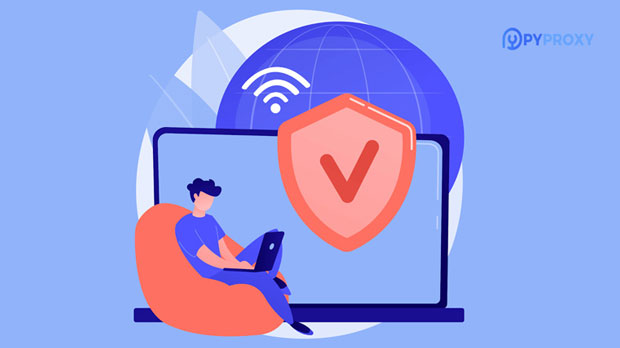When accessing online platforms such as Zoosk, the method of connecting can vary widely, with two common options being the use of a VPN (Virtual Private Network) and a proxy server. Both these tools serve to mask a user’s IP address and location, but their functionality, security, and performance can differ. Understanding these differences is crucial for users who are seeking privacy, security, or bypassing geographical restrictions while using Zoosk. While they might appear similar on the surface, the underlying mechanics and impact on the user experience are distinct. In this article, we will explore the key differences between using a VPN and a proxy server for logging into Zoosk and provide insights on which might be best suited for different purposes. Understanding VPN and Proxy ServersBefore delving into the specifics of using a VPN or proxy server to access Zoosk, it is important to understand the fundamental differences between these two technologies.A VPN (Virtual Private Network) encrypts your internet connection and routes it through a secure server, making it appear as though you are browsing from a different location. This ensures not only privacy by hiding your real IP address but also security by encrypting all the data transmitted between your device and the server.On the other hand, a proxy server acts as an intermediary between your device and the website you are accessing. Unlike a VPN, a proxy does not encrypt your connection. It simply alters your IP address, making it appear that you are browsing from a different location. This may help bypass geographical restrictions, but it does not provide the same level of security as a VPN.Privacy and Security DifferencesOne of the most significant differences between a VPN and a proxy server lies in the level of security and privacy they provide.When using a VPN to log into Zoosk, all the data you send and receive is encrypted. This means that even if someone were to intercept your data, they would not be able to read it. This level of encryption is particularly important when accessing personal data or engaging in online activities that require a high degree of security.In contrast, a proxy server does not encrypt your data. This makes it a less secure option for users who are concerned about privacy. While a proxy can hide your IP address and make it seem as if you are browsing from a different location, it does not protect your data from being intercepted by third parties. As a result, using a proxy for logging into Zoosk might expose sensitive information, such as login credentials, to potential threats.Performance and Speed ConsiderationsAnother key factor to consider when choosing between a VPN and a proxy server for accessing Zoosk is performance and speed.A VPN typically introduces some level of latency or slowdown to your connection due to the encryption process and the detour your data takes through the VPN server. While high-quality VPN services strive to minimize this impact, users can still experience slower speeds compared to a direct connection. This can be especially noticeable when using services like Zoosk, where real-time communication and smooth browsing are important.On the other hand, a proxy server does not involve encryption, which means that it can offer faster speeds than a VPN. Since proxies do not route your data through secure servers, there is less processing involved, leading to potentially faster connection speeds. However, the trade-off is the lack of security, making proxies a less attractive option for users who prioritize privacy over speed.Geographical Restrictions and Accessing ZooskFor many users, the main reason for using a VPN or proxy server to access Zoosk is to bypass geographical restrictions. Zoosk, like many online platforms, may have region-specific content or be unavailable in certain countries. Both VPNs and proxy servers can make it appear as if you are browsing from a different location, allowing you to access content that might otherwise be blocked.A VPN is typically more effective for bypassing geographical restrictions since it not only changes your IP address but also encrypts your connection. This makes it harder for platforms like Zoosk to detect and block VPN traffic. VPNs often have servers in multiple countries, giving users the flexibility to access different versions of the site based on their desired location.Proxies can also help with bypassing geographical restrictions by masking your real IP address. However, since proxies do not encrypt your data, websites can more easily detect proxy traffic. This means that while a proxy might work for accessing Zoosk in some cases, it is not as reliable as a VPN in terms of ensuring access to region-locked content.Usability and CompatibilityBoth VPNs and proxies can be used to access Zoosk, but the ease of use and compatibility with different devices can vary.VPN services typically come with user-friendly applications that are compatible with a wide range of devices, including desktops, smartphones, and tablets. These applications often have simple interfaces and require minimal technical knowledge to use. Once installed, the VPN software will automatically route your internet traffic through the secure server, ensuring a seamless browsing experience.In contrast, proxies are often more complicated to set up, especially for less tech-savvy users. While some proxies offer browser extensions that can make installation easier, others require manual configuration on the device. Moreover, proxies may only work with specific applications or browsers, whereas a VPN provides system-wide protection.Cost ConsiderationsWhen choosing between a VPN and a proxy server to log into Zoosk, cost is another important factor to consider.VPN services typically require a subscription, with prices varying depending on the level of security and features offered. While there are some free VPN services available, they may come with limitations in terms of speed, server locations, or security. Paid VPNs generally offer better performance, more server options, and stronger encryption.Proxy servers, on the other hand, can be cheaper, with some free proxy services available. However, as mentioned earlier, the lack of encryption and potential for slower speeds may make them less appealing for users who prioritize security. Paid proxy services often offer better performance, but they still cannot match the level of security that a VPN provides.Which Option Is Better for Logging into Zoosk?Choosing between a VPN and a proxy server to log into Zoosk ultimately depends on your specific needs.If you are primarily concerned with privacy and security, a VPN is the better option. It provides robust encryption, ensuring that your personal data and login credentials remain safe. Additionally, VPNs are generally more reliable when it comes to bypassing geographical restrictions, making them an ideal choice for users looking to access Zoosk from a different location.However, if speed and performance are your main priorities, and you are willing to sacrifice some security, a proxy server might be a suitable choice. Proxies can offer faster speeds compared to VPNs, but they do not provide the same level of privacy or security.In conclusion, while both VPNs and proxy servers can be used to log into Zoosk, the right choice depends on your preferences and priorities. For those who value privacy, security, and reliable access, a VPN is the best option. For users who prioritize speed and are less concerned with security, a proxy server may suffice.
Apr 16, 2025
![arrow]()



























































